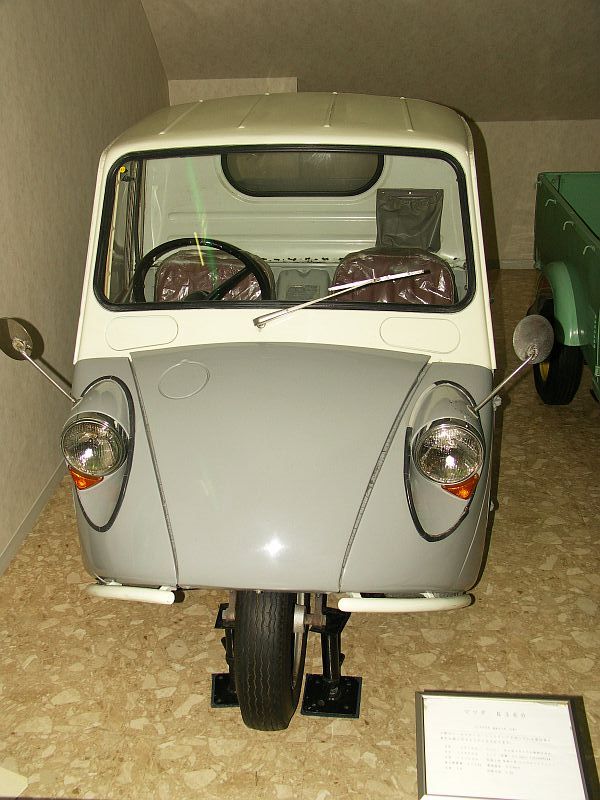Description
The Mazda K-360 was one of the most important vehicles in Mazda’s early history and a key contributor to Japan’s post-war economic recovery. Introduced in 1959 by Toyo Kogyo (Mazda’s former corporate name), it was a compact, affordable, highly manoeuvrable three-wheeled micro-truck designed to meet the needs of small businesses, shopkeepers and independent tradesmen at a time when Japan’s road network and economy were still developing. Light-commercial vehicles like the K-360 were essential to the period’s “economic miracle”, and the model quickly became one of Mazda’s best-selling products of the late 1950s and early 1960s.
The K-360 was powered by a small air-cooled two-cylinder engine mounted at the rear. Displacements varied during production, typically around 360 cc — intentionally sized to fit Japan’s kei-vehicle regulations of the time. Power output was modest, usually around 11–13 horsepower, but the engine was extremely economical, simple to service and well suited to the stop-start urban use for which the vehicle was designed. A basic manual gearbox sent power to the single driven rear wheel, giving the K-360 the characteristic driving dynamics of Japan’s early three-wheeler designs.
Despite its compact size, the K-360 offered surprising practicality. Its ladder-frame chassis was lightweight yet sturdy, and Mazda tuned the suspension for comfort on rough or unpaved roads still common in regional Japan. The vehicle’s narrow width and tight turning circle made it especially useful in crowded city streets, markets, delivery zones and older towns with narrow lanes. Payload capacity was substantial enough to carry goods, tools and equipment for small businesses, and the cab gave adequate weather protection and comfort for two occupants.
The styling of the K-360 reflected the simple, functional ethos of Japan’s early kei-commercial vehicles. It had a rounded, friendly appearance with a small enclosed cabin at the front, a single front wheel protruding slightly ahead of the body, and a utilitarian rear cargo bed. This approachable, almost cheerful design helped make it popular with a broad range of users, and it became a familiar sight across Japan’s growing cities and rural communities throughout the early 1960s.
Inside, the cabin was basic but practical. Seating was simple and upright, the dashboard minimal, and the driving controls laid out for ease of use. While not luxurious, the K-360 provided better comfort and protection from the elements than many earlier open-sided three-wheelers. Mazda’s increasing manufacturing refinement ensured that build quality was reliable, and the vehicle earned a reputation for toughness and dependable service.
On the road, the K-360 was easy to drive and forgiving. Its modest power was well matched to city speeds, and its lightweight construction made acceleration adequate for a commercial micro-truck. Handling was predictable by three-wheeler standards, and ride comfort — while basic — was better than in many comparable vehicles. The low running costs, excellent fuel economy and minimal maintenance requirements made it attractive to customers who needed affordable transportation in a period of rapid economic growth.
The K-360 enjoyed strong sales across Japan and helped establish Mazda as one of the country’s top manufacturers of light commercial vehicles. It ultimately paved the way for more advanced three-wheeler models and later for Mazda’s first four-wheeled trucks and passenger cars. The experience Mazda gained in engineering compact drivetrains and lightweight chassis design during the K-360 era would become crucial in its later development of kei cars, commercial vehicles and rotary-engine models.
Today, the Mazda K-360 is remembered as an iconic symbol of early post-war Japanese motoring. Surviving examples are rare and cherished by collectors of vintage Japanese commercial vehicles. It remains historically significant as one of the vehicles that helped build Japan’s small-business economy and as a milestone in Mazda’s evolution from a maker of small utility trucks to a global automobile manufacturer.

